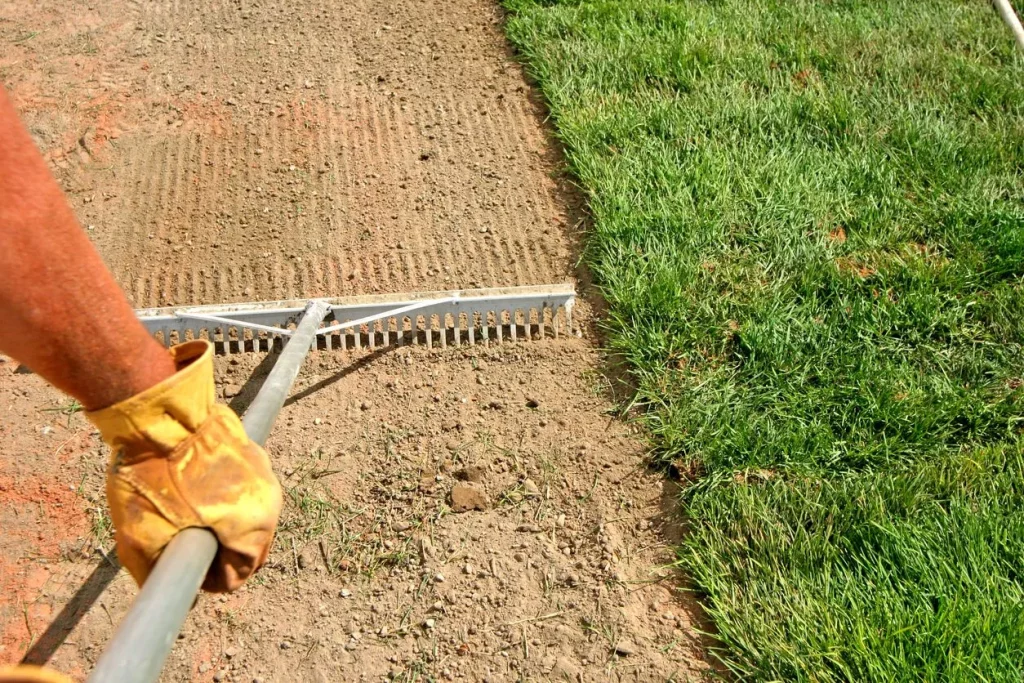Sodding installation is a great way to instantly transform the look of your yard. Unlike seeded lawns, sodded yards take root quickly and require less care once they’re established.
Before laying sod, prepare the ground by raking and adding topsoil to level low spots. Keep the soil moist throughout the process to help the sod establish roots.
Soil Preparation
Soil is a critical factor in how well sod looks. It is the layer of earth on the surface of the ground that is composed of mineral particles from rocks, dead organic material, and living organisms. Soil is an important natural resource that helps plants to obtain nutrients, air, and water.
Before sodding, the soil must be thoroughly rototilled. This loosens the soil and enables it to breathe. It also promotes deep rooting.
Organic matter, such as composted leaf and yard waste, pine bark, peat moss, or manure should be added to the soil during this process. In addition, a light coating of sand should be spread over the soil. If a soil test has indicated that the soil needs lime or fertilizer supplements, these should be added at this time as well.
When the soil is ready for sodding, the site should be cleared of all construction debris and brush. The area should be sloped so that it drains away from any buildings on the property.
A non-selective herbicide should be applied a couple of weeks prior to the sod delivery. This will kill any existing weeds and grasses in the area that will compete with the new sod for nutrients, moisture, and sunlight. The rototilled soil should be leveled with a hand rake and any rocks larger than a tennis ball should be removed.
Laying the Sod
Once your soil is ready, it’s time to lay the sod. For a lush, healthy lawn, you need to make sure that the sod is placed correctly.
To prevent mistakes, draw a basic design of the landscape you’d like to sod and then divide it into smaller sections for measurement and layout. Then, find the square footage of each section by measuring length x width. This will help you determine how much sod you need.
After removing weeds or other vegetation, loosen the soil with a rototiller. Aim for a 6- to 8-inch depth of loose, soft soil. Add compost or other organic material, if necessary, to adjust the soil’s pH and mineral levels.
Water the soil lightly to moisten it before you start working. Then, rake the soil to even out the surface and break up any large clumps of dirt. It’s a good idea to rake the area again after you install the sod, because it will help smooth and settle the soil.
Unroll the sod and start by laying it along a straight edge, such as your driveway, patio or fence line. It’s important to avoid walking on the sod as it’s being laid, because this can create air pockets and cause it to lose moisture. Once you’ve finished laying the sod, pat it down to remove any air pockets and ensure that the sod and soil have good contact.
Watering the Sod
Throughout the first week after installation, water the new sod several times a day. This will keep the soil moist and encourage the roots to get a hold of it. After the first week, reduce the frequency to once a day but ensure that the soil remains moist. Be sure to focus on the perimeter of the lawn and any seams between sod pieces.
Over the next couple of weeks, you’ll notice that the sod starts to root into the soil and become firmly established. After the sod has rooted into the soil, you can begin to water it less frequently.
Sodding is a great way to quickly establish a lush, green yard. It’s also easy to maintain and looks great for years! With proper care and watering, you’ll have a yard that’s the envy of the neighborhood. If you’re interested in having sod installed, contact Eden landscaping professionals to learn more about their services. They can help you choose the right sod for your property and then install it properly so that it takes root quickly and thrives for years to come. Their contractors will also take care of any fertilization and mowing needs you may have to help your lawn grow healthily. They can also provide advice on how to prevent diseases and other problems that could affect your new grass.
Keeping the Sod Moist
Immediately following the sodding process it is very important to keep the new sod hydrated. This will ensure the sod roots get a good start and can grow properly. It takes about a week for the sod to begin to root in and it is critical to keep the sod moist during this time.
Sod is perishable and will die quickly if it isn’t carefully taken care of after installation. Because of this it is a good idea to hire a professional sodding service that has the knowledge and experience needed to install sod properly.
It is very important to water new sod frequently – ideally, a couple of times a day. Watering too little will result in the sod dying and overwatering will cause it to rot. The best times to water are early morning or evening as the sod will be less likely to dry out during these times.
It is also a good idea to use a lawn fertilizer after sodding. This will help create a healthy lawn that will last for years to come. It is a good idea to use liquid fertilizer rather than granular as this will be more easily absorbed by the roots of the sod. It is a good idea to aerate the lawn within a year of sodding as this will allow the fertilizer to better reach the sod’s roots.


